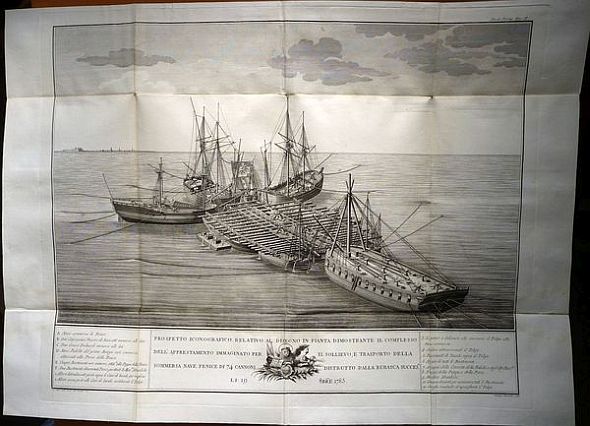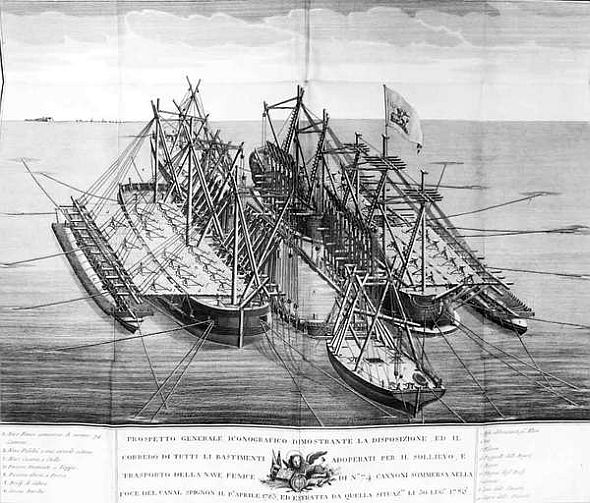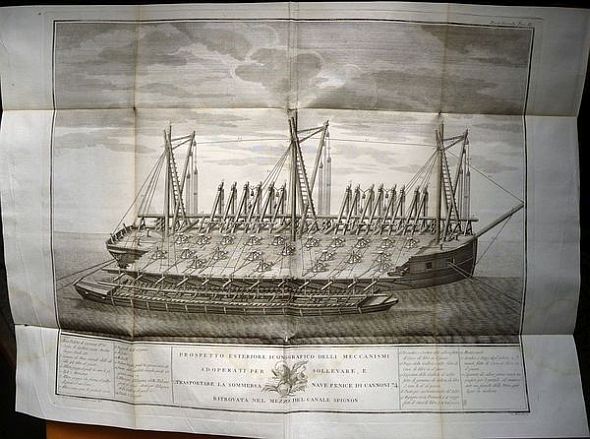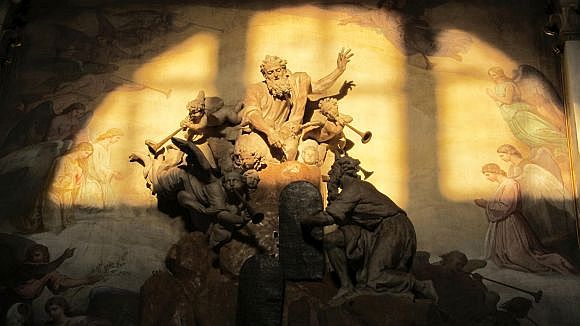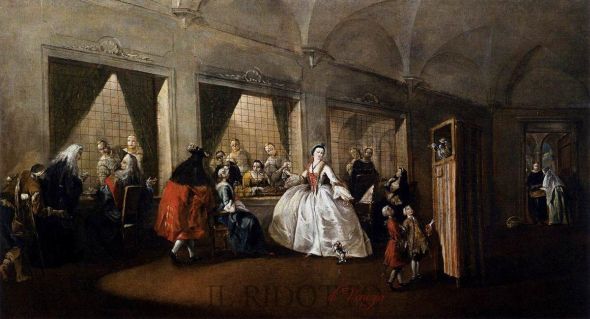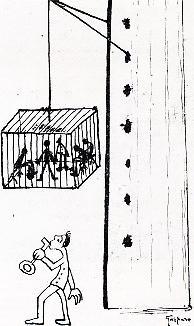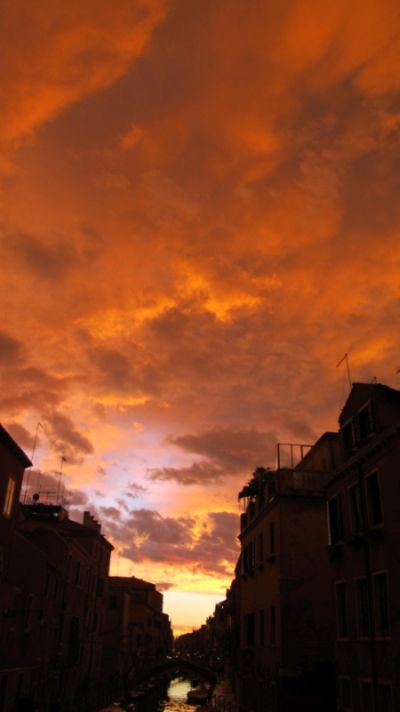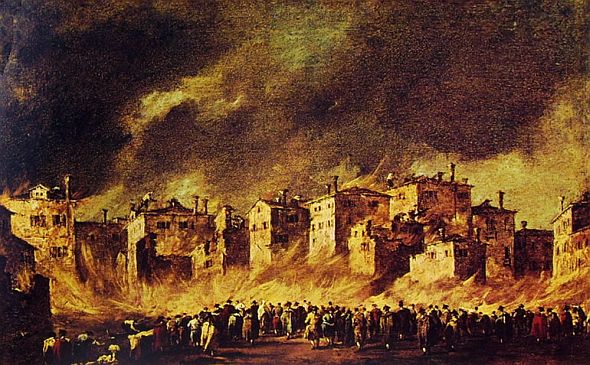
The last thing on this mortal earth that the Venice firemen ever want to deal with is a fire.
If you leaf through a thousand years of Venetian history, you can see that fire has been about a skillion times more damaging to the city than water ever has been, or ever could be, not that I’m promoting acqua alta. But you can accommodate water, one way or another — besides, you get fair warning when it’s coming, and you know that after a few hours it will go away all by itself. But you cannot accommodate a fire. There have been conflagrations in Venice that can match some of the worst you’ve ever heard of, at least in places not named Chicago or London.
In 1514 the entire Rialto market area was leveled by fire, leaving only the church of San Giacometto untouched. The Doge’s Palace was carbonized, as they say here, to various degrees three times, in 1483, 1574 and 1577, the last one leaving so little that there was serious discussion of demolishing the walls and just building the whole thing over. (Plan rejected, happily for us.)
And there was the olive oil warehouse behind San Marcuola that caught fire from a lantern in 1789. I don’t think there’s any way to put out an oil fire, at least of that magnitude. Four hundred families were left to pick through the smoking ruins. Not to forget the lumber warehouse that caught fire at Barbarie de le Tole in 1686, which incinerated the neighborhood leaving only one house standing.
And my all-time non-favorite, the fire that started in San Severo in 1105 and took a tour of something like half of the city. Get out your maps: It started in the house of the Zancani family at San Severo, burned the neighborhood, then the flames moved on to San Lorenzo, San Provolo, Santa Maria Formosa, onward to San Giovanni Nuovo, San Zulian and San Basso and around the Piazza San Marco up to the church of San Geminiano, and proceeded to San Moise’ and Santa Maria Zobenigo. There the strong wind blew sparks across the Grand Canal. San Gregorio caught fire, Sant’ Agnese, San Trovaso, San Barnaba, San Basilio, then on to Angelo Raffaelle and San Nicolo dei Mendicoli; the fire on the San Marco side, not done yet, marched to San Maurizio, S. Paternian (now Campo Manin), San Luca, San Vidal, and San Samuele. Bring me an acqua alta that can hurt like that.
Today the firemen probably spend more time in the water than they do around those banal but occasionally really bad fires caused by short circuits, flaming food and arson. The lagoon is their beat: Pilings gone adrift, boats that have capsized or sunk, and other nautical mishaps are what the firemen usually deal with, and yesterday morning we came across such an event in the rio di San Giovanni Nuovo as we were walking from Santa Maria Formosa toward San Zaccaria.
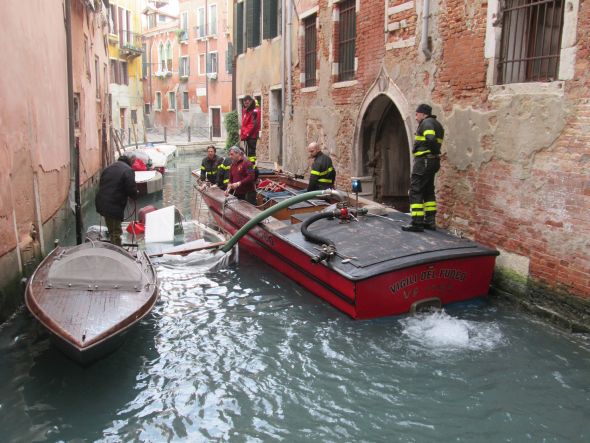
First we heard the roar of the fireboat’s engine, all set to pump like crazy. Then we saw it, next to its waterlogged victim; by the look of the work already in progress, we’d come in toward the end of the second act of this drama, which means we had no idea of what had happened in the first act, nor who the dramatis personae were. But we could recognize a logistical problem which for some reason was more difficult than usual. I can say that because, as Lino explained it to me, if they had executed two little steps at the beginning, they’d have been home for lunch in no time. (I will try to describe his solution later.) As it was, in the absence of a team leader, everybody got into the act, and you don’t need to be a fireman, or a boat, to know that when too many people are trying to come up with a solution to a problem, the problem wins.
Short version: They evidently tried to lift the entire boat, which, considering the weight of the water, was discovered to be impossible. They couldn’t raise the boat even two inches above the surface of the canal to be able to pump out the water in the boat (we walked by when they were at the point of renouncing the effort), so they ended up deciding to tow it away. By the look of it, this procedure would have been more or less like towing a dead blue whale which had swallowed five Zamzama guns, with cannonballs.
Lino, who has also dealt with his fair share of submerged boats, told me that the boat was (briefly) on a modest slant. Blocking the upper side, they only needed to raise the lower side enough to start pumping. He made it sound easy, and considering how many times he and I have undertaken maneuvers with extremely heavy boats all by ourselves, he gets Olympic-level credit for understanding physics. Still, I give the firemen the benefit of the doubt because firemen are my heroes, and nothing I say should be taken as denigrating or belittling them in any way, much less to imply that I could have done it better. But still, it wasn’t going well — even I could see that.
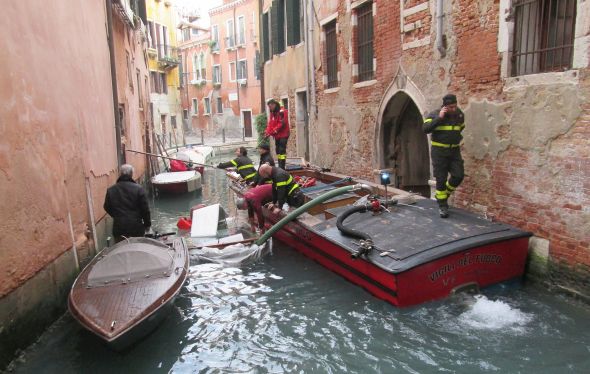
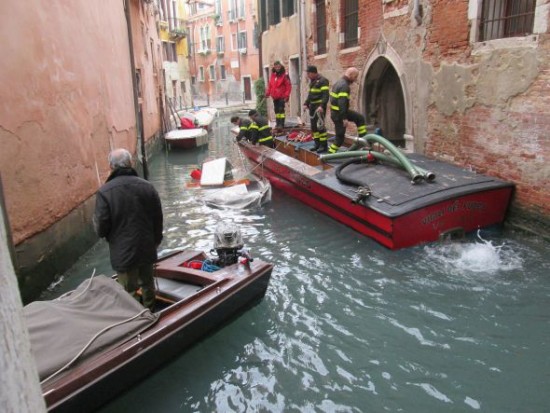
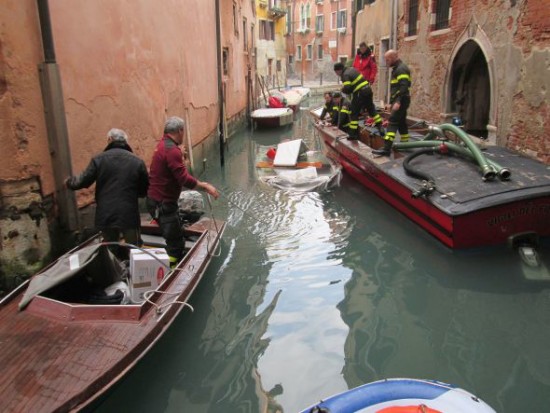
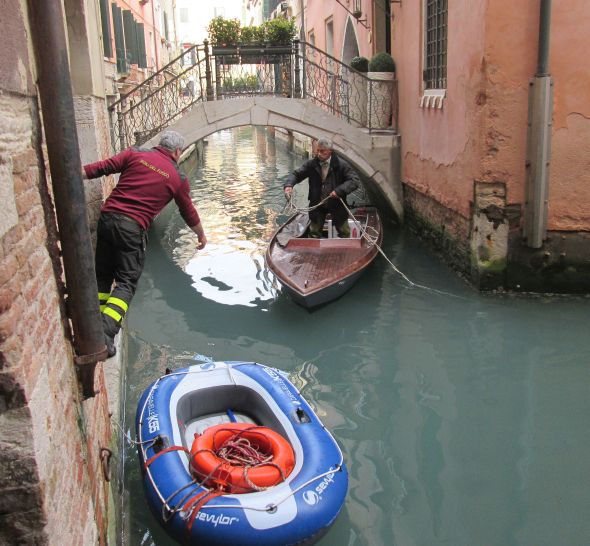
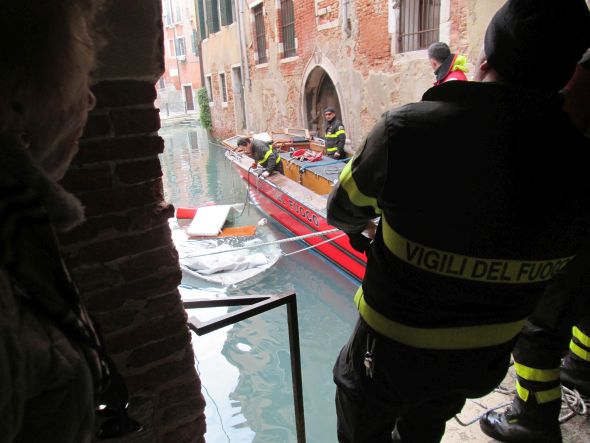
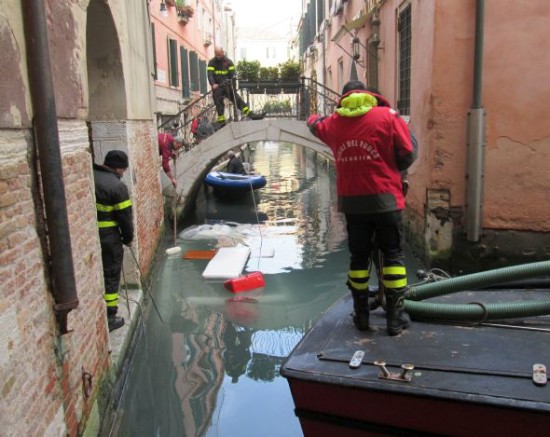
Speaking of cannons, and lifting, a Venetian patrician named Giovanni Zusto once devised a way to lift an entire ship to the surface — a ship carrying cannon, which is what brought this feat to my mind — after it had sat in the mud for three years.
You should know about this, to have something astonishing to think about whenever you get tired of marveling at Venetian engineering skill ashore. On April 1, 1783, the “Fenice,” complete with 74 cannon, sank in the Canal Spignon, which is just inside the inlet at Malamocco. That location means mud and currents.
So the aforementioned Zusto — once again, amateurs save the day — designed a system of enormous rafts which provided the basis for this gigantic hauling-up. On July 30, 1786, the Fenice rose again. The designs are on the second floor of the Naval Museum, which is closed for renovation. Here they are; have a look, and rethink how hard your day has been.
